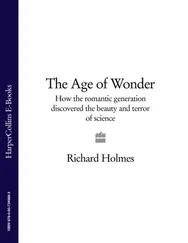James Walsh - The Popes and Science
Здесь есть возможность читать онлайн «James Walsh - The Popes and Science» — ознакомительный отрывок электронной книги совершенно бесплатно, а после прочтения отрывка купить полную версию. В некоторых случаях можно слушать аудио, скачать через торрент в формате fb2 и присутствует краткое содержание. Жанр: foreign_prose, foreign_religion, foreign_antique, на английском языке. Описание произведения, (предисловие) а так же отзывы посетителей доступны на портале библиотеки ЛибКат.
- Название:The Popes and Science
- Автор:
- Жанр:
- Год:неизвестен
- ISBN:нет данных
- Рейтинг книги:4 / 5. Голосов: 1
-
Избранное:Добавить в избранное
- Отзывы:
-
Ваша оценка:
- 80
- 1
- 2
- 3
- 4
- 5
The Popes and Science: краткое содержание, описание и аннотация
Предлагаем к чтению аннотацию, описание, краткое содержание или предисловие (зависит от того, что написал сам автор книги «The Popes and Science»). Если вы не нашли необходимую информацию о книге — напишите в комментариях, мы постараемся отыскать её.
The Popes and Science — читать онлайн ознакомительный отрывок
Ниже представлен текст книги, разбитый по страницам. Система сохранения места последней прочитанной страницы, позволяет с удобством читать онлайн бесплатно книгу «The Popes and Science», без необходимости каждый раз заново искать на чём Вы остановились. Поставьте закладку, и сможете в любой момент перейти на страницу, на которой закончили чтение.
Интервал:
Закладка:
Roth says nothing about the decree of Boniface VIII., nor of any possible effect that it had upon anatomy. The real historian, of course, does not mention things that have not happened. Roth confesses, as I have said, that he takes the material for his sketch of anatomy before Vesalius's time from Corradi. [Footnote 9] Corradi being an Italian, and knowing of the slander with regard to the Papal decree, explicitly denies it. Surely, here is material enough to convince anyone that all that Professor White has said with regard to the supposed effect of the misinterpretation of Boniface's decree is without foundation in the history of anatomy. Within twenty years after the bull was issued dissection was practiced to such an extent, that body-snatching became so common that there were prosecutions for it, and public dissections seem to have been held every year in the universities of Italy during most of the fourteenth century.
[Footnote 9: Corradi Dello Studio e dell' Insegnamento dell' Anatomia in Italia nel Medio Evo ed in parte del Cinquecento, Padova, 1873.]
De Renzi [Footnote 10] gives an interesting account of the methods by which material was obtained for dissection purposes before governments made any special provision for this purpose. Naturally, the rifling of graves was resorted to by students intensely interested in the subject of anatomy. The first criminal prosecution for body-snatching on record is in 1319, when some students brought a body to one Master Albert, a lecturer in medicine at the University at Bologna, and he dissected it for them. At this time, according to the statutes of the university, teachers of anatomy were bound to make a dissection if the students supplied the body. The whole party were brought to trial for this offence, though they do not seem to have suffered any severe penalty for their violation of the laws. At this time, according to De Renzi, there was a rage for dissection and many bodies were yearly obtained surreptitiously for the purpose.
[Footnote 10: De Renzi Storia della Medicina in Italia, Napoli. 1845-49, Vol. II., p. 247.]
With regard to the bodies of condemned criminals, people began to countenance the procedure, and while unwilling as yet to give them freely, allowed the bodies to be taken. Corradi, quoted by Puschmann, says "that laws against the desecration of graves, without being abolished, became a dead letter. The authorities interfered only if decided violence had been used or a great scandal raised. Such consequences were likely to follow only if, in the ardor of their enthusiasm for anatomical knowledge, students rifled the graves of well-known persons or took the bodies of those whose relatives discovered the desecration and proceeded against the marauders by legal measures."
At the Italian universities after the middle of the fourteenth century there is abundant evidence for perfect freedom with regard to dissection. We have already shown by our quotation from Roth that Bertrucci was very active in dissection work and did many public dissections. He was followed by Pietro di Argelata, who died toward the end of the fourteenth century. These men followed Mondino in the chair of anatomy at Bologna, and Julius Pagel, in his chapter on Anatomy and Physiology in Puschmann's Handbuch der Geschichte der Medizin (Vol. I., p. 707), says that "the successors of Mondino were in a position, owing to the gradual enlightenment of the spirit of the time and the general realization of the importance of anatomy as well as the fostering liberality of the authorities, to make regular, systematic dissections of the human body. " This would bring us down, then, to the end of the fourteenth century.
To return now to Roth, who takes up the next century. He says:
"For the fifteenth century, the university statutes of Bologna for the year 1405 furnish many sources of information. There is a special division which is concerned with the annual anatomy or dissection that had to be made and the selection of the persons to be present, the payment of the expenses and other details. An addition to the statutes, made in the year 1442, determines the arrangement of the delivery of the body from the city to the university authorities. Every year two bodies, one male and one female, must be provided for the medical school dissections. In default of a female body, a second male body was to be provided. In the presence of such detailed regulations, the absence almost entirely of details as to the actual performance of dissections can mean very little. Bologna reached its highest development as a medical school at the beginning of the sixteenth century when Alexander Achillinus and Jacob Berengarius had charge of the public dissections there. Of these I shall speak later." (All this is at the University of Bologna, where ecclesiastical influence was supreme and where the Popes exercised their jurisdiction as the ultimate authority to be appealed to in all disputed educational questions.)
Roth continues: "Padua had, like Bologna, dissection in the fourteenth century. There is the record of a dissection made in the year 1341, in which Gentilis made the discovery of a gall-stone." (It is evidently not because the dissection was unusual, but because the discovery was unusual, that this incident is mentioned. The dissections were such ordinary occurrences as not to deserve special mention except for some particular reason.)
"Much more is known about dissection at Padua in the fifteenth century, when the city had become Venetian." [Footnote 11] (It is significant to note that the previous occurrence was in pre-Venetian days, for Professor White insists that it was the Venetian authorities, in opposition to the Pope, who allowed dissection at Padua. Here is the rebuttal of any such theory.) "Bertapaglia, in his Surgery, has the record of the dissection of a criminal made under the direction of Master Hugo De Senis, on the 8th of February, 1429. On the 4th of April, 1430, the dissection of a woman was made. In 1444 Professor Montagnana speaks of fourteen dissections at which he had been present." (This would seem to indicate that dissections were quite common and that the occasional records of them give no proper idea of their actual number.)
[Footnote 11: Note that this is a full century before Vesalius's time, who, Professor White insists, reintroduced dissection.]
I would not wish to produce the impression, however, that Italy was the only place in Europe in which dissections were freely done during the fourteenth and fifteenth centuries. There is no doubt that anatomy and surgery and every branch of medicine was cultivated much more assiduously and with much better opportunities provided for students down in Italy, than anywhere else in the world. This of itself alone shows the utter absurdity of the declarations that the Church was opposed to medical progress in any way, since the nearer the center of Christendom, the more ardor there was for investigation and the more liberty to pursue original researches. Other countries also began to wake up to the spirit of progress in medical education that was abroad. In France there were two centers of interest in anatomy. One of these was at Montpelier, the other at Paris. It is interesting to note, however, that the men to whom anatomical progress is due at these universities obtained their training, or at least had taken advantage of the special opportunities provided for anatomical investigation to be had, in the Italian cities. Guy de Chauliac I have already mentioned. He is spoken of as the Father of Modern Surgery, and there is no doubt that he did much to set surgery on a very practical basis and to make anatomy a fundamental feature of the training for it. He declared that it was absurd to think that surgeons could do good work unless they knew their anatomy.
Under his fostering care the study of anatomy flourished to a remarkable degree at the University of Montpelier. The difficulty hitherto had been that it was very hard to procure bodies for dissecting purposes. It is easy to understand that friends of the dead would always prevent dissections as far as they could. They do so even at the present moment, and there are not many of us who find it in our hearts to blame them over much for it. Few of us are ready to make the sacrifice of our own dead. Even the poor in those days had friends who prevented the cutting up of their remains; for large alms-houses were not presided over by paid officials, but by religious, to whom their poor in their friendlessness appealed as kindred. There were not many prisons, and they were not needed because all felonies were punished by death. Guy de Chauliac realized that here was the best opportunity to procure bodies. Accordingly it was mainly through his instrumentality that a regulation was made handing over the dead bodies of malefactors to the medical school for dissecting purposes. It must be recalled that when he did this the Papal court was at Avignon, in the South of France, and exerted great influence over the University of Montpelier, situate not far away.
Читать дальшеИнтервал:
Закладка:
Похожие книги на «The Popes and Science»
Представляем Вашему вниманию похожие книги на «The Popes and Science» списком для выбора. Мы отобрали схожую по названию и смыслу литературу в надежде предоставить читателям больше вариантов отыскать новые, интересные, ещё непрочитанные произведения.
Обсуждение, отзывы о книге «The Popes and Science» и просто собственные мнения читателей. Оставьте ваши комментарии, напишите, что Вы думаете о произведении, его смысле или главных героях. Укажите что конкретно понравилось, а что нет, и почему Вы так считаете.












